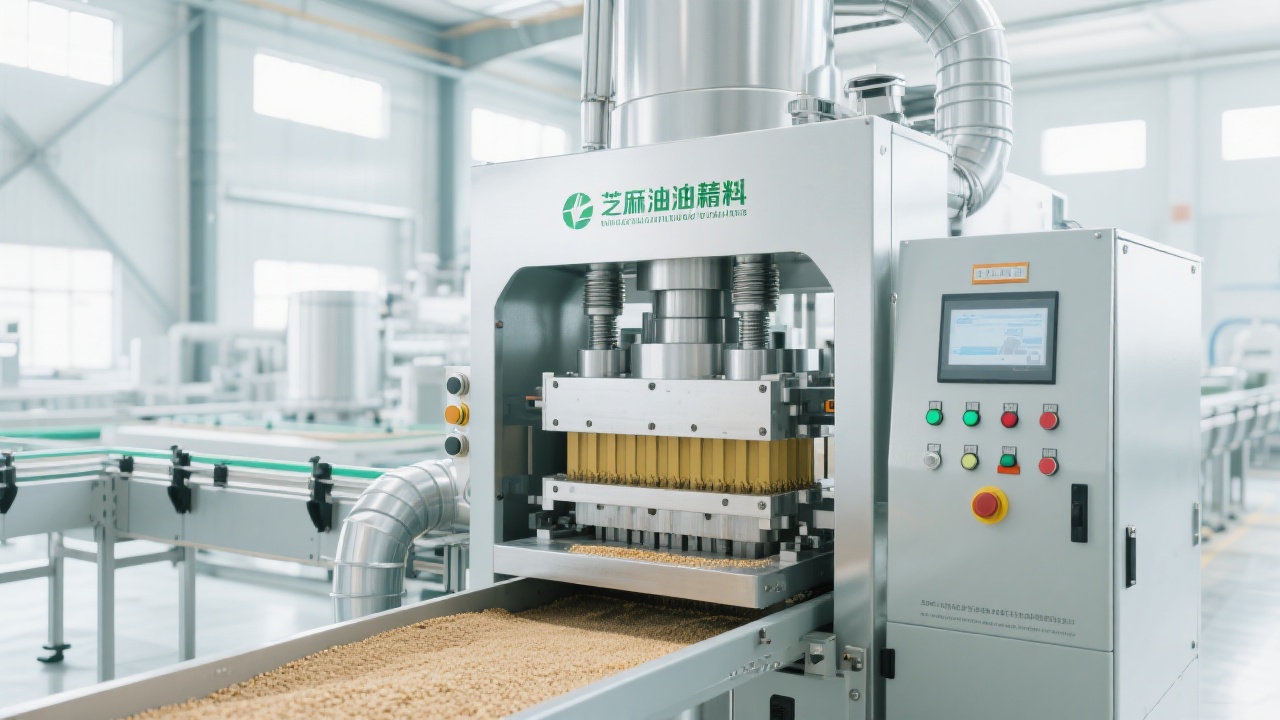
When it comes to exporting sesame oil to the high-end healthy food market, a crucial question arises: should you choose cold-pressed or hot-pressed sesame oil? This article delves into the core differences between the two extraction processes, focusing on how temperature control affects nutrient retention and flavor expression.
Temperature plays a vital role in the extraction of sesame oil, significantly influencing the retention of nutrients such as linolenic acid, oleic acid, and vitamin E. In cold-pressing, the temperature is kept below 60°C, which helps preserve these nutrients. For example, studies have shown that cold-pressed sesame oil can retain up to 90% of vitamin E, compared to only 60% in hot-pressed oil. (Data from a leading food science journal)

The lower temperature in cold-pressing also helps maintain the integrity of unsaturated fatty acids, such as linolenic and oleic acid. These fatty acids are known for their health benefits, including reducing the risk of heart disease. In contrast, hot-pressing, which involves higher temperatures (usually above 120°C), can cause oxidation and degradation of these nutrients, leading to a loss of their health-promoting properties.
Another significant difference between cold-pressed and hot-pressed sesame oil lies in their flavor and aroma. Cold-pressed sesame oil retains the natural, nutty aroma of sesame seeds, which is highly sought after in high-end culinary applications. The gentle extraction process allows the oil to develop a delicate and complex flavor that enhances the taste of dishes.
On the other hand, hot-pressed sesame oil has a stronger, more pungent flavor due to the Maillard reaction that occurs at high temperatures. While this flavor may be suitable for some industrial applications, it can be overpowering for use in home cooking or high-end restaurants. (A taste test conducted by a professional food critic)
Home Cooking: Cold-pressed sesame oil is the ideal choice for home cooking, especially for salad dressings, stir-fries, and dipping sauces. Its high nutritional value and delicate flavor make it a favorite among health-conscious consumers. For example, a small family-owned cold-pressed sesame oil brand in California has seen a significant increase in sales as more consumers are looking for healthy and flavorful cooking oils.

High-End Restaurants: Many high-end restaurants around the world are now using cold-pressed sesame oil to add a touch of luxury to their dishes. The oil's natural aroma and high-quality flavor can elevate the dining experience for customers. A renowned French restaurant in Paris, for instance, uses cold-pressed sesame oil in its signature dishes, which has received rave reviews from food critics.
Industrial Applications: Hot-pressed sesame oil, with its higher yield and stronger flavor, is often used in industrial applications such as the production of processed foods, cosmetics, and pharmaceuticals. A large-scale food processing company in China uses hot-pressed sesame oil as an ingredient in its snack products, taking advantage of its cost-effectiveness and strong flavor.
It's important to note that cold-pressing generally has a lower yield compared to hot-pressing. This is because the gentle extraction process requires more time and energy, resulting in a higher cost per liter of oil. However, the higher cost is often justified by the superior quality and health benefits of cold-pressed sesame oil.
Hot-pressing, on the other hand, can produce a larger quantity of oil in a shorter period, making it more cost-effective for large-scale production. But as mentioned earlier, the quality of the oil may be compromised due to the high temperatures involved.
When deciding between cold-pressed and hot-pressed sesame oil for export to the high-end healthy food market, several factors need to be considered. If you're targeting consumers who value health, flavor, and quality, cold-pressed sesame oil is the clear choice. Its high nutritional value, natural aroma, and suitability for home and high-end culinary applications make it a premium product.
However, if your target market is more focused on cost and large-scale industrial applications, hot-pressed sesame oil may be a better option. But keep in mind that you may need to position your product accordingly to meet the specific needs of this market segment.

Ready to explore the potential of cold-pressed sesame oil in the high-end healthy food market? Click here to learn more about our high-quality cold-pressed sesame oil products and how they can help your brand succeed in the global market.

